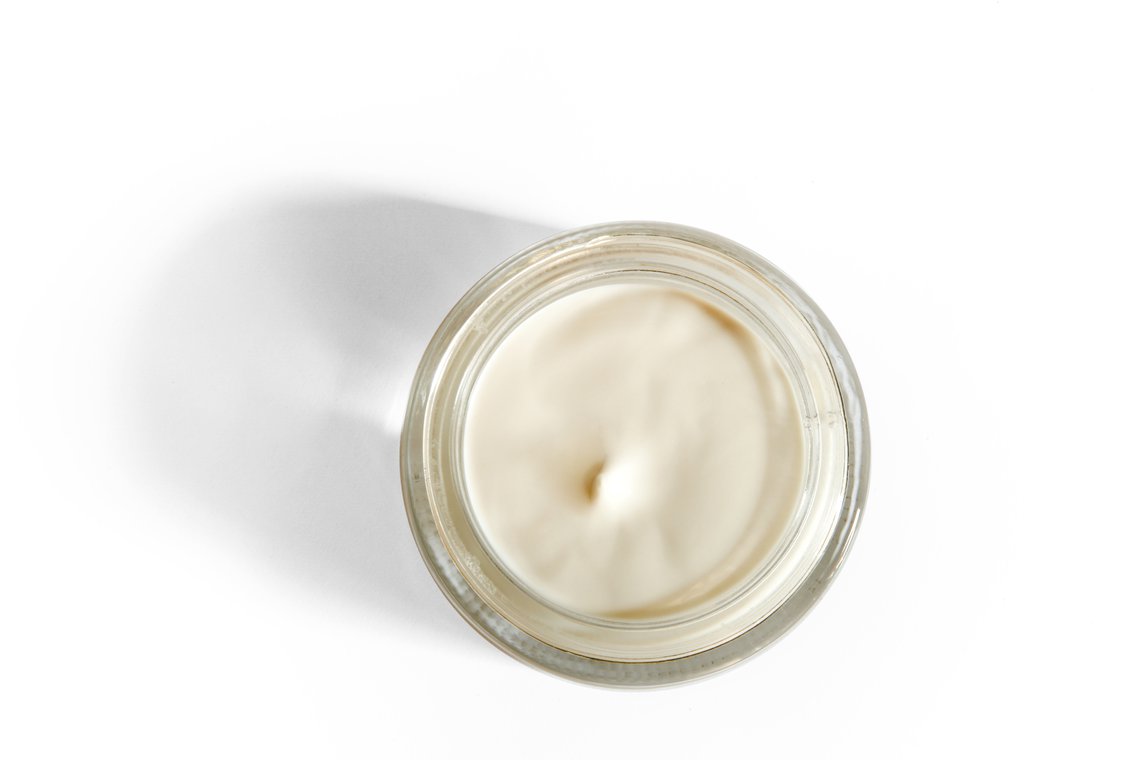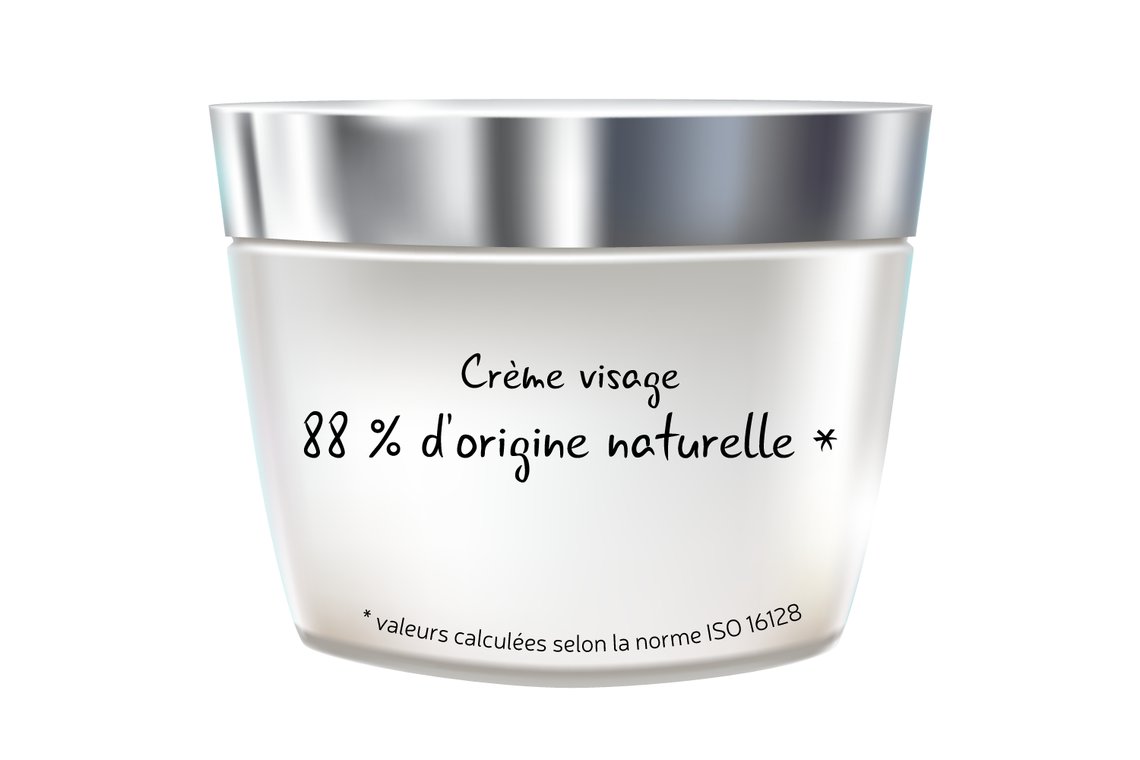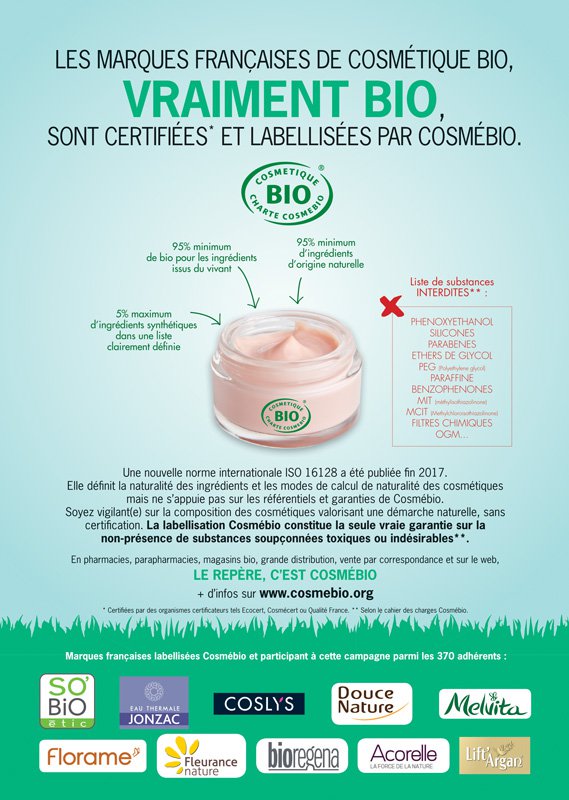
On September 29, 2017, our team organized a press conference in Paris to inform the journalists of the imminent publication of the ISO 16128 standard. With the support of the NGOs Générations Futures, Générations Cobayes and WECF, we warned about the risk of mis-selling for consumers looking for more natural cosmetics.
Today, the first products claiming natural origin according to ISO 16128 are on the shelves. Our team analysed the INCI list of a face cream announcing 88% of natural origin according to ISO 16128.
The goal is to show you concretely what can be hidden behind these new marketing claims. For legal reasons, we will not mention products, but you can make this analyse on any product mentioning the ISO 16128 standard.
Analyse of a face cream announcing 88% natural origin according to ISO 16128

« 88% natural origin according to ISO 16128 », what does it mean exactly ?
If the product does not claim "organic product" or "natural product" (the packaging is very neutral, it doesn't use the usual codes of the natural), the analysed cream announces in its description the presence of 88% of natural-origin ingredients according to the definitions established by ISO 16128.
As a reminder, ISO 16128 establishes two categories of ingredients of natural origin: "natural ingredients" and "derived natural ingredients". These "derived natural ingredients" are cosmetic ingredients containing a proportion of more than 50% of natural origin.
To calculate this percentage, the brand used "the raw ingredient data sent to date by [its] suppliers". The claim is not subject to any control by a certification body.
12% of petrochimical ingredients containing BHT, phenoxyethanol, silicone or PEG

Among the forty or so ingredients that make up the analyzed cream, no less than 14 are controversial ingredients:
- PEG-100: humectant made from a carcinogenic component that can be found in the final ingredient
- vinyl dimethicone / methicone silsesquioxane crosspolymer: silicone used as a thickener, polluting manufacturing process and ingredient that improves the appearance of the skin or hair but not active on the cause of dehydration
- decyloxazolidinone: emollient and unlisted preservative
- phenoxyethanol: irritating preservative
- dimethicone: best-known silicone, polluting manufacturing process and cache-misery ingredient
- carbomer: gelling, to give a cream texture sodium
- polyacrylate: thickener and emollient, irritant and toxic for aquatic ecosystems
- tromethamine: pH regulator, formaldehyde releaser, irritating
- polyvinyl alcohol: film-forming agent, to give the sensation that the cream stays on the skin, but it remains an alcohol that dries
- PEG-7 glyceryl cocoate: surfactant, manufacturing process that brings impurities
- BHT: anti-oxidant for the product, very irritating and potential endocrine disruptor (ANSES)
- polyquaternium-7: surfactant, non-biodegradable
- ethylhexylglycerin: unlisted preservative, irritant
- methylsilanol tri-PEG-8 glyceryl cocoate: emulsifier
As a reminder, the ISO 16128 standard gives only definitions and calculation methods to establish the percentage of naturalness of a given product. The text does not say what must contain organic or natural cosmetics (what labels like Cosmebio do), and thus does not prohibit any ingredient, even the most controversial ones.
An unsignificant percentage if it is not accompanied by a label
The example of the decrypted cream show the limits of the ISO 16128 and the confusion it creates for the consumer. At first glance, the mention "88% of natural-origin ingredients" sends a positive message about the nature of the product. However, the INCI list reveals in a second time the ambiguity of the allegation.
When a cosmetic carry a label like Cosmebio, you have the guarantee that the high percentage of natural origin has been validated by an independent certification body and that it is accompanied by the absence of undesirable ingredients.
An advertising campaign to remind the importance of the Cosmebio label
On February 21st, Lea Nature launched an ad campaign in press releases to reaffirm the importance of the Cosmebio label for the protection of consumers looking for more natural cosmetics.

(this campaign is an independent initiative of the group Lea Nature who chose its partners, not funded by Cosmebio)
She reminds us that the Cosmebio label is ...
- A clean and noble composition: 95% minimum of natural and organic ingredients, 5% maximum of petrochemical ingredients in a clearly defined list and unauthorized controversial substances
- A virtuous life cycle: ethical sourcing, respect for animals, gentle and non-polluting manufacturing processes, eco-designed packaging, waste management plan ...
- Transparent communication: precise certification details, packaging validated by the certifiers.
We are counting on you to share this article, so that information travels to as many people as possible.
#stopISO16128
